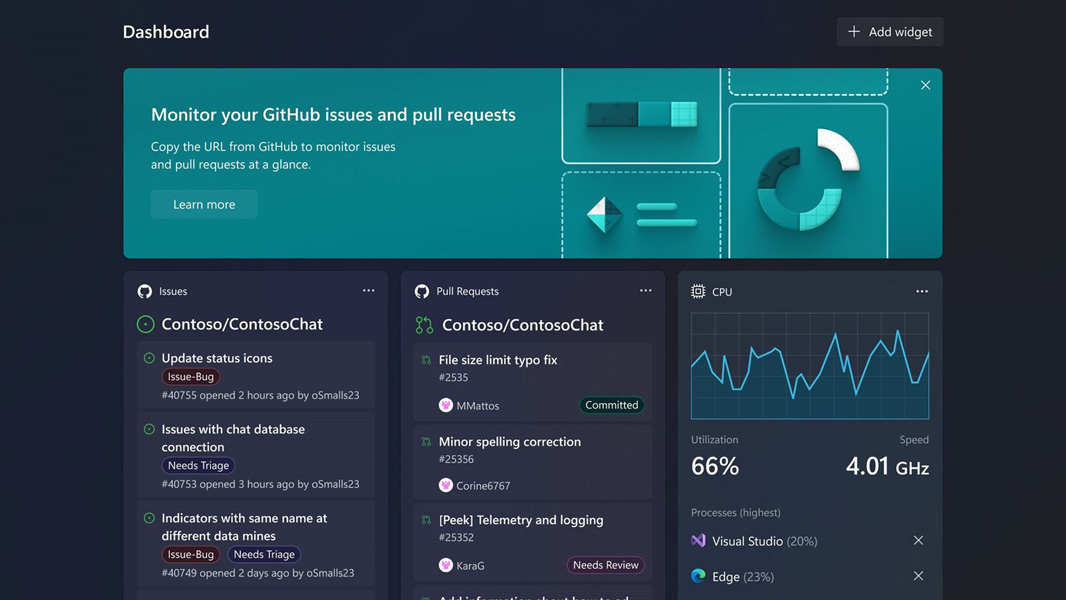Build 2023: Microsoft Again Makes the Case for Windows to Developers
- Paul Thurrott
- May 23, 2023
-
0

For the past several years, Microsoft has done what it can to make Windows the ideal environment for developers. But now it has AI, and that case, suddenly, is even more compelling.
“AI is the defining technology of our time and developers are at the forefront of this transformation,” Microsoft executive vice president Panos Panay explains. “With the right tools, we can empower developers and our shared customers to shape the future and leave their mark on the world.”
Windows Intelligence In Your Inbox
Sign up for our new free newsletter to get three time-saving tips each Friday — and get free copies of Paul Thurrott's Windows 11 and Windows 10 Field Guides (normally $9.99) as a special welcome gift!
"*" indicates required fields
And on that note, while some of the coming AI additions to Windows 11 are consumer-focused—like Windows Copilot and the expansion of Bing Chat plugins to Windows—some, like the ONNX runtime for Hybrid AI Loop, Dev Home, and more are quite developer-centric. And these capabilities expand on previous pushes with the Windows Subsystem for Android, the Windows Subsystem for Linux, and Windows Terminal to make Windows even more useful to this audience.
Microsoft announced Hybrid AI Loop last year as a way for developers to target hybrid AI scenarios that include components in Azure and on edge devices. Today, Microsoft revealed that it will enable Hybrid AI Loop in Windows 11 using its ONNX runtime that gives third-party developers access to the same tools that the software giant’s engineers use internally to run AI models on Windows, iOS, Android, and Linux across CPU, GPU, NPU (neural processing unit), or hybrid with Azure.
Naturally, this experience works best on Windows given the wide range of available GPUs and a coming generation of NPUs like those found in Qualcomm Snapdragon 8cx Gen3-based PCs like the Surface Pro 9 5G and the Windows Dev Kit 2023. And both AMD and Intel will be bringing NPU-powered processors to market this year as well. (The AMD Ryzen 7040 Series processors are AI capable and are already available.)
To address developer productivity, Microsoft is adding a feature called Dev Home to Windows 11. This new open-source app, available now in preview, will work like a dashboard that helps you configure the Windows Package Manager (winget), connect to GitHub, configure coding environments in the cloud using Microsoft Dev Box and GitHub Codespaces, create a Resilient File System (ReFS)-based Dev Drive for faster build performance, and track all of your workflows and tasks. You can download it now from the Microsoft Store.
Microsoft is also integrating GitHub Copilot X into Windows Terminal so that GitHub Copilot users can use natural language AI in inline and chat experiences right from the command line. It will recommend commands, explain errors, and take actions on your behalf. Terminal is also getting a new tab tear-out feature that will let users separate a tab into its own window.
Windows on Arm is getting better for developers, too: Visual Studio 17.6 now supports .NET MAUI on Arm, and LLVM v12.0, Node 20.0.0, WiX installer v4.0, and Unity Player are all now generally available natively on Windows on Arm. GNU GCC, Flutter and Dart, PyTorch, and GIMP are coming in Arm-native versions soon too. (And more mainstream apps like Brave, Prime Video, Zoom, and others are all Arm-native now, with Dropbox, Spotify, WhatsApp, and more coming soon.)
You can learn more about these and other advances at the new Windows Developer Center website.